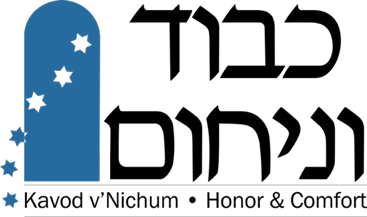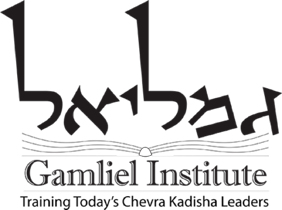Jewish Funerals Burial and Mourning – www.Jewish-funerals.org
Web Site Editing Tips
I. Write or call David to set up your login and password
II. To edit the web site, go to
A. http://jewish-funerals.talance.org/user
B. Kvn and kvn10
C. Key in your personal login and password
III.General Management Layout
A. Top left – Content, User, Help
1. This is the most important part of the page for website management.
2. Be aware – this drop down does not freeze in place at the top of the page and remain visible when you scroll down the page – it rolls off the page!
B. Top center – Topic Index
C. Top right – My Question is About
D. Center – Menu Bar
E. Center right – Search this Site
IV. Creating New Pages – “Add page” allows you to create a new document
A. Title: The name of the page. Required.
B. Body: The main content of the page.
V. Editor – The editor is called TinyMCE.
A. You can use it much like Microsoft word.
B. You can switch back and forth from the editor to html – Disable rich-text: Switches to the HTML version. To get back to editing, click on “enable rich-text”.
C. It has its own web site with documentation and its own user community forum, though much of what is there won’t apply, it may be helpful.
VI. Content
A. Create new content by
1. typing it
2. then go back and edit the formatting and styles later.
B. Or by copy and paste content – if you want to import from word or a spreadsheet
1. after copying the content you want to bring in
2. go to the “paste from word” icon (image of a clipboard with a W)
3. past the content and click on insert
4. most formatting such as bold and outline should be preserved
C. When highlighting text before choosing a style, don’t grab any extra spaces or lines as that can cause overlapping of styles.
D. If you copied content from MS Word directly into the document, the *ONLY* way to fix this is to start over.
VII. Importing existing tables and spreadsheets
A. Table width presents a special problem because it may be controlled in two different places. Usually deleting all existing “width” commands in Modify table and Table cell properties and starting from scratch is best.
B. To edit table properties for an existing table, there are 3 icons that are relevant
1. Table properties – when you mouse-over this icon it says “inserts a new table” – don’t be fooled, you can also click on this icon to edit the table properties. When you click on the icon, the edit box title reads “insert/modify table”
a. General – Cell padding of 3 or more gives space between the lines of the table and the content – without cell padding the table content looks smooshed and is hard to read
b. Advanced – Border color is where you establish that you want a border and its color
2. Table row properties
a. Advanced – Background color allows choosing just odd or just even row so that you can create a table with alternating row shading
3. Table cell properties.
C. General – Deleting the width and choosing “all cells in the table” will allow the table to adjust to full page
VIII. Document name and location is automatic, but instead of the automatic name, you may want to create a shorter name or keep one that maintains a link that was previously used
1. for example, you may have previously sent an e-mail saying that a document was available at a certain location
2. or you may reference a document’s location in your content
3. you can modify the link at the bottom of the page with the “URL path settings”
a. click on URL path settings
b. at the top of that section, uncheck “automatic alias”
c. type in your new title – no spaces
d. note that while you are editing, the url address of your page appear as /node/xxxx/edit
e. once your page is saved, the new url address will be your domain name and the new page name
4. link to the page with just the page name – not domain name and no suffix (such as “.htm”)
IX. Editing Documents and their content after they are created
A. “List content2” provides a listing of all documents you have created. It can be sorted by creation date, alphabetically by title, etc.
B. Documents can be re-opened and modified and then re-saved
X. Linking to another file – there are four ways to create links outside your document
1. If the page exists on the web, but not on your site
a. Click on “insert/edit link” and paste the full url in the “link url” line.
2. If the page exists in your listing of documents that you have already created for your site (list content)
a. Click on “insert/edit link” and just paste the file name, not the domain name, into the “link url” line.
3. If the page exists on your computer, but you don’t want to or can’t put it into web page content – for example a pdf.
a. Within the new or existing document,
i. select the text or image you want to hyperlink to the document.
ii. Click the Insert/Edit Link button to open the Insert/Edit Link window.
iii. Click the Browse button (at the end of the line, the blue box with six red squiggles) to open the File Browser.
iv. This brings you to a file browser screen that will allow you to store files in a directory called /sites/default/files/spiritweb/
(a.) To add a new file – click on Browse, navigate to a file on your computer, and then click Upload to transfer the file from your computer to the website server. You’ll see file you chose selected at the bottom of the window. Click Send to Tiny MCE to transfer the document from the File Browser to the Insert/Edit Link window.
(b.) To add a file you previously uploaded, just click on the file name
b. Note that there is no size limits either per document or cumulative.
4. A more limited method of attaching files from your computer can be accessed from the main editing page at the bottom – called File Attachments. The limit of 1MB seems to apply to both the file size and the cumulative sum of all files.
XI. Creating internal links – often used for footnotes
A. A link has two ends – called anchors – and a direction. The link starts at the “source” anchor and points to the “destination” anchor, which may be any Web resource (e.g., an image, a video clip, a sound bite, a program, an HTML document, an element within an HTML document, etc.).
B. Set up the destination first and the source link second.
1. Create the content of the page, including the thing you want linked and the thing you want the anchor link to jump to.
2. Place your cursor into your page where you would like the anchor link to point to.
3. Click on the anchor button on the content editor toolbar and name your anchor.
4. Highlight the text in your source anchor and click the “Link” button in the toolbar.
5. Use the anchor drop-down menu to select the anchor you created. Click Insert to create the link.
XII. Tips
A. Open your site in two different tabs. Use one to edit a main page and the other to add new pages.
B. If you create a second document with the same title, its name will have an appended “-0” and the next instance will have a “-1”.
C. When checking links, be sure that nothing is pointing to the old web site.

